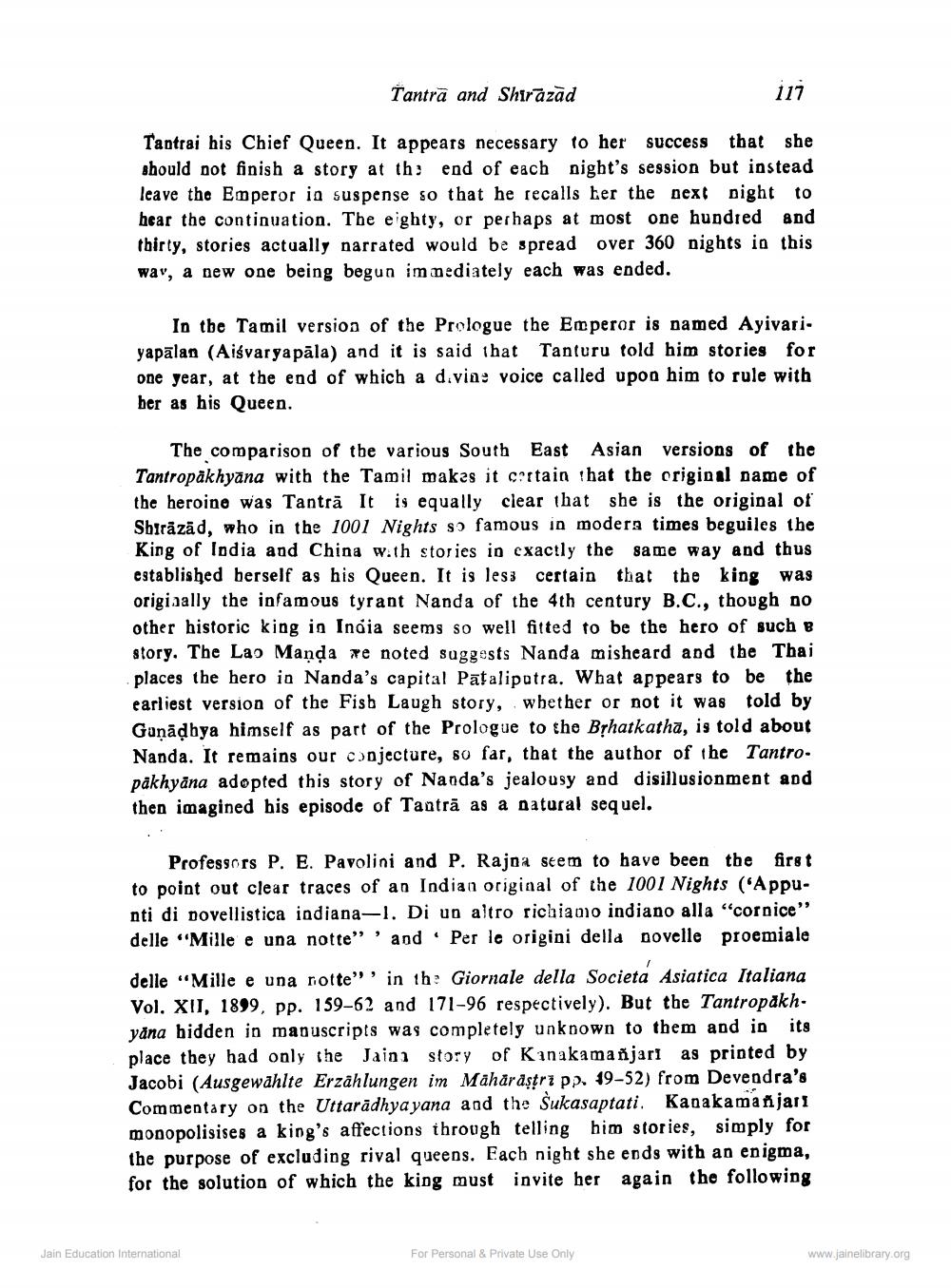________________
Tantrā and Shirazad
117
Tantrai his Chief Queen. It appears necessary to her success that she should not finish a story at th: end of each night's session but instead leave the Emperor in suspense so that he recalls her the next night to hear the continuation. The eighty, or perhaps at most one hundred and thirty, stories actually narrated would be spread over 360 nights in this way, a new one being begun immediately each was ended.
In the Tamil version of the Prologue the Emperor is named Ayivariyapālan (Aiśvar yapāla) and it is said that Tanturu told him stories for one year, at the end of which a divino voice called upon him to rule with her as his Queen.
The comparison of the various South East Asian versions of the Tantropākhyāna with the Tamil makes it cirtain that the original name of the heroine was Tantrā It is equally clear that she is the original of Shiräzäd, who in the 1001 Nights so famous in modera times beguiles the King of India and China with stories in exactly the same way and thus established herself as his Queen. It is lesz certain that the king was originally the infamous tyrant Nanda of the 4th century B.C., though no other historic king in Inaia seems so well fitted to be the hero of such B story. The Lao Manda re noted suggests Nanda misheard and the Thai places the hero in Nanda's capital Patalipotra. What appears to be the earliest version of the Fisb Laugh story, whether or not it was told by Goņādhya himself as part of the Prologue to the Bțhatkatha, is told about Nanda. It remains our conjecture, so far, that the author of the Tantro. pakhyāna adopted this story of Nanda's jealousy and disillusionment and then imagined his episode of Taatrā as a natural sequel.
Professors P. E. Pavolini and P. Rajna seem to have been the first to point out clear traces of an Indian original of the 1001 Nights ('Appunti di novellistica indiana- 1. Di un altro richiamo indiano alla “cornice" delle “Mille e una notte" ' and 'Per le origini della novelle proemiale
delle “Mille e una notte" ' in the Giornale della Societa Asiatica Italiana Vol. XI, 1899, pp. 159-62 and 171-96 respectively). But the Tantropakhyana hidden in manuscripts was completely unknown to them and in its place they had only the Jaini story of Kinakamañjari as printed by Jacobi (Ausgewählte Erzählungen im Mahärdstri pp. 19-52) from Devendra's Commentary on the Uttarādhya yana and the Sukasaptati. Kanakamanjari monopolisises a king's affections through telling him stories, simply for the purpose of excluding rival queens. Each night she ends with an enigma, for the solution of which the king must invite her again the following
Jain Education International
For Personal & Private Use Only
www.jainelibrary.org




